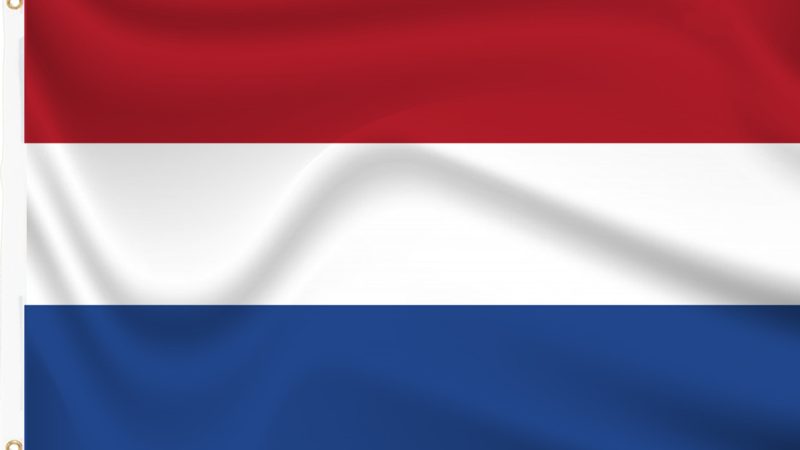The flag of Netherlands is one of the most recognizable national symbols in the world, boasting a simple yet powerful design of three horizontal stripes: red, white, and blue. While its design may seem straightforward, the history of the Dutch flag is anything but simple. It is steeped in centuries of political intrigue, military victories, and national pride. In this article, we explore 10 historical facts that shed light on the evolution of the flag and its importance in Dutch history.
Flag of Netherlands: The Origins of the Dutch Flag-Orange, White, and Blue
The flag of the Netherlands has not always been red, white, and blue. Its earliest known version, dating back to the late 16th century, was orange, white, and blue. This flag, known as the “Prince’s Flag” or Prinsenvlag, was named after William of Orange, the leader of the Dutch Revolt against Spanish rule. The colors symbolized loyalty to the House of Orange-Nassau, a prominent dynasty that played a significant role in Dutch politics. The orange stripe at the top represented William of Orange and the Dutch people’s struggle for independence.
Flag of Netherlands: The Role of the Eighty Years’ War in Shaping the Flag
The Dutch flag’s connection to the Eighty Years’ War (1568–1648) is profound. This prolonged conflict was fought between the Dutch provinces and the Spanish Empire, and it ultimately led to the independence of the Dutch Republic. During this period, the orange, white, and blue flag was flown by the Dutch forces as a symbol of resistance against Spanish domination. The colors of the flag represented the unity of the rebellious provinces, and it became a beacon of hope for those fighting for a free and independent Netherlands.
Transition from Orange to Red: The Shift in Colors
One of the most significant changes in the history of the Dutch flag occurred in the 17th century when the top stripe of the flag gradually shifted from orange to red. While there is no definitive explanation for this change, many historians believe that the orange dye used for the flag faded to red over time, leading to the adoption of red as the official color. Additionally, the House of Orange’s political influence waned, and the Dutch Republic sought to distance itself from monarchist symbols. By the mid-17th century, the red, white, and blue version of the flag had become the standard.
The Dutch East India Company and the Flag
The flag of the Netherlands played a crucial role in the expansion of Dutch influence during the Age of Exploration. The Dutch East India Company (VOC), one of the most powerful trading companies in history, used the red, white, and blue flag as its standard. As Dutch ships sailed to distant corners of the globe, the flag became a symbol of Dutch commerce and power. The VOC was instrumental in establishing Dutch colonies in Asia and Africa, and the flag was flown proudly in these territories as a representation of Dutch sovereignty.
The Dutch Republic’s Naval Dominance
During the 17th century, known as the Dutch Golden Age, the Netherlands emerged as a major naval power. The Dutch Navy was one of the most formidable in Europe, and the red, white, and blue flag was flown on Dutch warships as they engaged in battles across the globe. The flag became synonymous with Dutch maritime dominance, and its presence on the seas was a clear indication of the Netherlands’ growing influence. The Dutch fought several naval wars, most notably against England, where their flag would flutter proudly in many victorious encounters.
The Napoleonic Era and the Flag’s Survival
The late 18th and early 19th centuries brought about a period of political upheaval for the Netherlands, especially during the Napoleonic Wars. The country was invaded by French forces, and the Dutch Republic was replaced by the Batavian Republic, a French puppet state. During this time, the tricolor red, white, and blue flag remained in use, although French revolutionary symbols influenced its design. Despite French occupation, the Dutch people continued to identify with their national flag, and it became a symbol of resistance to foreign rule.
Flag of Netherlands: The Flag as a Symbol of Dutch Independence in 1815
After the defeat of Napoleon, the Netherlands regained its independence in 1815, and the Kingdom of the Netherlands was established under King William I. The red, white, and blue flag was retained as the official national symbol, solidifying its place in Dutch history. The return of the House of Orange to power reestablished the monarchy, but the flag’s red stripe, which had replaced the orange in the previous century, remained unchanged. This demonstrated the nation’s commitment to its republican past while embracing its new monarchical future.
The Flag During World War II
During World War II, the Netherlands was occupied by Nazi Germany from 1940 to 1945. Throughout the occupation, the Dutch flag served as a powerful symbol of resistance against the Nazi regime. Although the occupying forces sought to suppress Dutch identity, the red, white, and blue flag became a rallying point for the Dutch resistance movement. After the liberation of the Netherlands in 1945, the flag was raised once again in celebration of the country’s freedom and the defeat of the Axis powers.
Modern Uses of the Dutch Flag
In modern times, the flag of the Netherlands continues to be a source of national pride. It is prominently displayed on national holidays such as King’s Day (Koningsdag) and Liberation Day (Bevrijdingsdag). The flag is also used during sporting events, international competitions, and official state ceremonies. In recent years, the Dutch flag has become a symbol of unity and patriotism, representing the country’s rich history, cultural diversity, and democratic values.
The Influence of the Dutch Flag on Other Nations
The design of the Dutch flag has influenced several other national flags around the world. For example, the red, white, and blue color scheme of the Russian flag is said to have been inspired by the Dutch tricolor. Peter the Great of Russia admired Dutch naval power and adopted a similar flag design for his own navy in the late 17th century. The Dutch flag’s influence can also be seen in the flags of other nations with historical ties to the Netherlands, such as South Africa and Luxembourg.
Conclusion
The flag of Netherlands is much more than a simple combination of colors; it is a symbol of a nation’s resilience, independence, and enduring spirit. From its origins in the struggle for freedom during the Eighty Years’ War to its role as a rallying point during World War II, the Dutch flag has been a constant presence in the country’s history. Whether flying proudly over government buildings, on ships during the Golden Age, or in modern celebrations, the red, white, and blue tricolor continues to represent the identity and pride of the Dutch people.
FAQs
1. Why did the Dutch flag change from orange to red?
The transition from orange to red likely occurred due to the fading of the orange dye, which turned red over time. Additionally, political reasons such as the decline of the House of Orange’s influence may have contributed to the change.
2. What do the colors of the Dutch flag represent?
The colors of the Dutch flag—red, white, and blue—are believed to represent the Dutch struggle for independence and the unity of the nation’s provinces. The colors were initially linked to William of Orange and the fight against Spanish rule.
3. Is the Dutch flag the same as the Luxembourg flag?
The Dutch and Luxembourg flags are similar, both featuring horizontal stripes of red, white, and blue. However, the shade of blue on the Luxembourg flag is lighter, and the two flags have different proportions.
4. When is the Dutch flag flown?
The Dutch flag is flown on national holidays such as King’s Day (April 27), Liberation Day (May 5), and Remembrance Day (May 4). It is also displayed during important national and international events.
5. Has the design of the Dutch flag changed since the 17th century?
The design of the Dutch flag has remained relatively consistent since the 17th century, with the most notable change being the shift from an orange to a red stripe at the top of the flag.
Also read: Travel Tote Bags: 11 Must-Try Brands for Ultimate Durability









